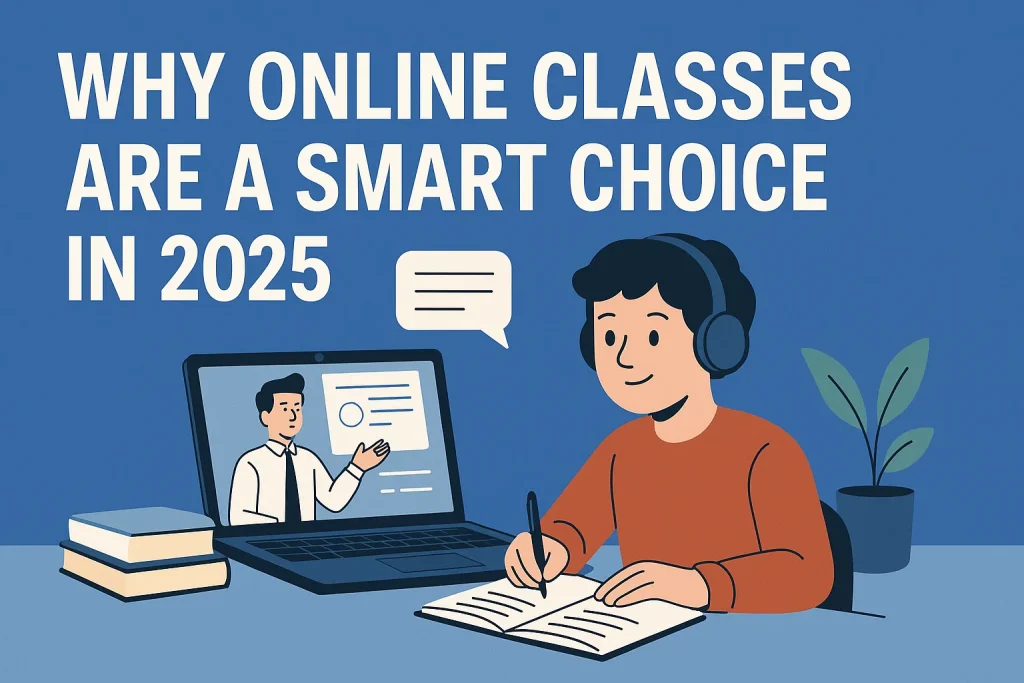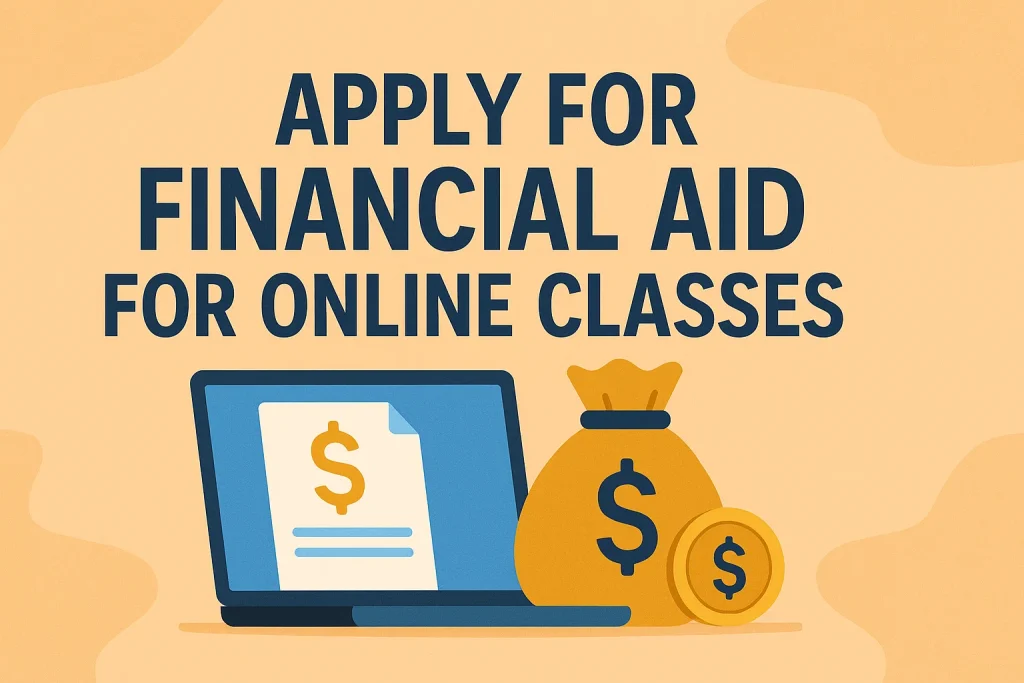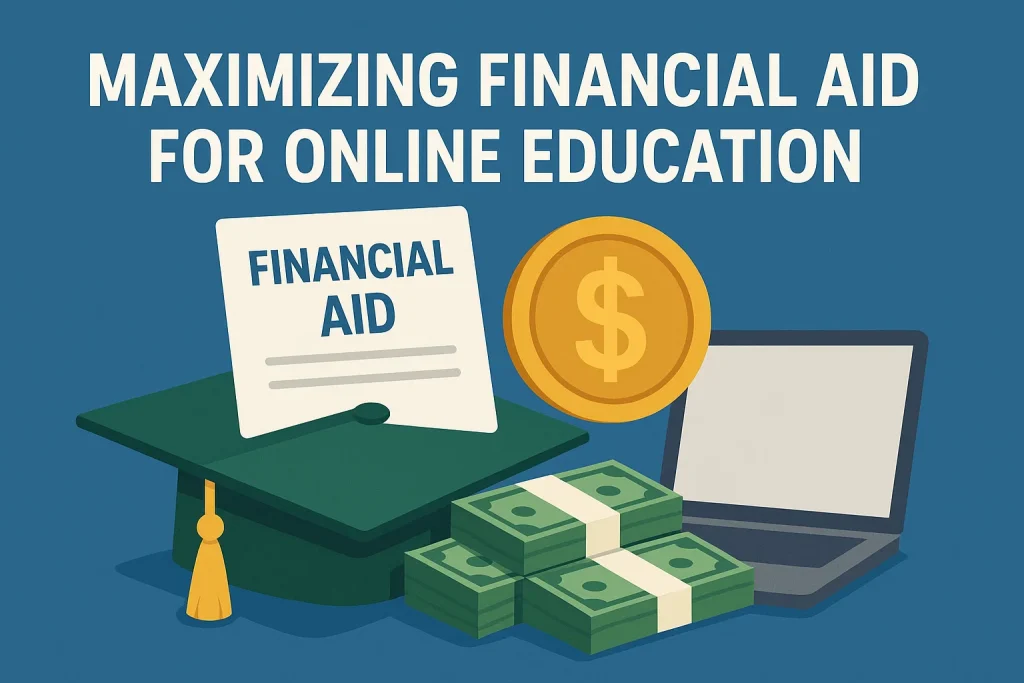It’s no secret—college tuition keeps climbing, and for many of us, the idea of earning a degree feels more like a financial burden than a stepping stone. But here’s the good news: online classes with financial aid in 2025 are breaking down those walls. Whether you’re a working parent, a recent high school grad, or someone looking to pivot careers, the rise of affordable online learning is changing how we think about higher education.
Over the past decade, we’ve researched and written extensively about global education trends—from international study programs to government-funded online platforms. One consistent theme we’ve seen? Access matters. And when quality online education is paired with real financial support, the doors open even wider.
In this guide, we’ll walk through the essentials—what financial aid is available, how to apply, which online colleges are offering generous support in 2025, and what common mistakes to avoid. We’ll also share real stories, practical tips, and expert-backed advice to help you make confident, informed choices about your education journey.
So, if you’ve ever wondered, “Can I actually afford to go back to school online?”—you’re in the right place. Let’s explore how online classes with financial aid are not just possible, but practical, flexible, and within reach.
Contents
- 1 Why Online Classes Are a Smart Choice in 2025
- 2 Types of Financial Aid Available for Online Courses
- 3 How to Apply for Financial Aid for Online Classes
- 4 Best Accredited Online Colleges That Offer Financial Aid (2025)
- 5 Common Mistakes to Avoid When Seeking Financial Aid Online
- 6 Benefits of Taking Online Classes with Financial Aid in 2025
- 7 Real-World Examples and Success Stories
- 8 Tips for Maximizing Financial Aid for Online Education
- 9 Final Thoughts: Making Online Education Affordable in 2025
- 10 Frequently Asked Questions (FAQs)
Why Online Classes Are a Smart Choice in 2025

We’ve been tracking online education trends for years, and in 2025, it’s clear: digital learning isn’t just a backup plan—it’s a leading choice. Thanks to better tech, flexible formats, and growing support from financial aid programs, more students are choosing to study online than ever before.
Here’s why it’s a smart move:
- Learn from anywhere. Whether you’re in a small town or living overseas, you can earn a degree without moving.
- Balance work, life, and school. Online courses fit your schedule—perfect for parents, professionals, or part-time learners.
- Pay less for the same education. Online programs often cost less in tuition, and you can save money on housing and transportation.
- Get real support. Accredited online schools offer career coaching, tutoring, and access to financial aid advisors.
Comparison of Average Costs — Online vs. Traditional Degrees in 2025
| Type of Program | Average Annual Tuition | Housing & Travel Costs | Total Estimated Cost |
| Traditional In-Person College | $14,500 | $8,000 | $22,500 |
| Accredited Online Degree Program | $9,000 | $0 | $9,000 |
Source: National Center for Education Statistics (NCES)
Types of Financial Aid Available for Online Courses
We often hear from students who think online learners can’t get financial aid. That’s a myth—and one we’re happy to clear up. In 2025, there are several types of aid available for those taking courses remotely, from federal grants to scholarships designed just for distance learners.
Federal Financial Aid (FAFSA)
The Free Application for Federal Student Aid (FAFSA) is your first step. Many accredited online programs accept FAFSA, just like traditional colleges. You may qualify for:
- Pell Grants: Need-based, and you don’t need to pay them back.
- Federal student loans: Low-interest and flexible repayment.
- Work-study programs: Even some online schools offer remote work-study jobs.
Tip: The key is to enroll in a program that’s accredited and recognized by the U.S. Department of Education.
State Grants and Scholarships
Many states offer scholarships for residents, even if they’re studying online. Some even run their own virtual universities. For example:
- California College Promise Grant supports low-income residents.
- New York’s Excelsior Scholarship helps cover tuition at online public colleges.
Always check your state’s education agency to see what you qualify for.
Institutional Aid from Online Universities
Many online universities offer in-house scholarships based on merit, need, or specific fields of study. For example:
- Western Governors University (WGU) provides scholarships for IT and healthcare students.
- Arizona State University Online offers need-based grants for part-time learners.
Always reach out to the financial aid office at the school you’re applying to. They often have hidden gems in the form of niche awards.
Private Scholarships and Employer Tuition Assistance
Thousands of private organizations and foundations offer aid specifically for online learners. Great starting points include:
- Fastweb
- Scholarships.com
- CareerOneStop
Also, don’t forget about employer-sponsored programs. Companies like Starbucks, Amazon, and Target offer full or partial tuition for eligible employees through online partnerships.
How to Apply for Financial Aid for Online Classes

It might seem complicated at first, but we’ve helped hundreds of students navigate the financial aid process—and trust us, it’s doable. The secret? Start early, stay organized, and don’t be afraid to ask for help.
Step-by-Step FAFSA Guide for Online Students
- Create an FSA ID at studentaid.gov.
- Complete the FAFSA form online—use your tax info and choose the online schools you want aid from.
- Check your SAR (Student Aid Report) for errors.
- Submit any extra documents the school requests.
- Accept your aid offer, comparing grants, loans, and work-study.
Remember, the earlier you apply, the better your chances of getting more aid.
Tips for Writing a Strong Scholarship Essay
We’ve read and reviewed scholarship essays for years. Here’s what works:
- Be personal and honest. Tell your story—what drives you, why you need this support.
- Avoid clichés. Instead of “I want to help people,” say how and why.
- Proofread like crazy. Typos can hurt your chances.
- Tailor your essay. Don’t send the same essay to every scholarship—tweak it to fit the theme.
One last tip? Get a second pair of eyes on your essay—use a mentor, teacher, or even Grammarly to help polish it.
Best Accredited Online Colleges That Offer Financial Aid (2025)
Over the years, we’ve reviewed dozens of online colleges to help students find trusted programs that balance affordability and quality. In 2025, many accredited institutions are not only offering strong online degrees but also generous financial aid packages. These schools accept federal aid, provide internal scholarships, and have good reputations.
Top Schools Accepting FAFSA and Offering Full Aid
Here are five top choices we’ve researched that combine low tuition, solid support, and a strong track record of helping students afford their education.
| Online College | Tuition (Per Year) | FAFSA Accepted | Aid Type Offered | Website |
| Western Governors University (WGU) | $7,452 | Yes | Need-based, merit, partner funding | wgu.edu |
| Southern New Hampshire University | $9,600 | Yes | Federal aid, grants, scholarships | snhu.edu |
| Arizona State University Online | $11,348 | Yes | FAFSA, work-study, ASU scholarships | asuonline.asu.edu |
| University of Florida Online | $3,876 (FL resident) | Yes | Federal and state aid | ufonline.ufl.edu |
| Purdue University Global | $10,125 | Yes | Federal aid, employer discounts | purdueglobal.edu |
Note: Always confirm aid availability and updated tuition on the school’s website.
Affordable Online Programs with High Aid Approval Rates
We often advise students to look beyond just big names. Some lesser-known schools offer strong programs and a high chance of getting aid.
- Minot State University Online — Great for affordable bachelor’s degrees.
- Fort Hays State University — Offers low tuition and accepts Pell Grants.
- Liberty University Online — One of the largest Christian universities with many aid options.
These schools may not make headlines, but they serve thousands of online students with flexible financial plans.
Common Mistakes to Avoid When Seeking Financial Aid Online
Applying for financial aid can feel overwhelming, especially when doing it for an online program. Over the years, we’ve seen students miss out on thousands of dollars simply because of easy-to-avoid mistakes. Here’s what to watch out for.
Missing Deadlines
This is the number one reason students lose aid. Every year, the FAFSA deadline shifts slightly—so mark your calendar. Some states have much earlier cutoffs than the federal ones.
Pro tip: Set phone alerts for all major deadlines and finish your application at least two weeks early.
Choosing Unaccredited Programs
Not all online schools are equal. If the school isn’t accredited, you won’t qualify for federal aid. Always verify accreditation through the U.S. Department of Education’s Database.
Not Understanding Loan Terms
Many students accept loans without reading the fine print. Know what’s subsidized (the government pays interest while you’re in school) and what’s not. The Federal Student Aid website explains loan types in simple terms.
Take time to understand repayment plans, interest rates, and your long-term responsibility before accepting any loan offer.
Benefits of Taking Online Classes with Financial Aid in 2025
Online education has come a long way. When paired with financial aid, it becomes one of the smartest ways to earn a degree. Based on what we’ve seen working with students over the past decade, here are the biggest perks.
Lower Cost, Higher Accessibility
Studying online cuts down costs not just on tuition, but on living expenses. You don’t need to pay for dorms or commute daily.
- Programs like edX and Coursera even offer affordable courses from top universities.
- Many schools offer payment plans or tuition caps for full-time online learners.
For low-income students or those returning to school, these options make higher education feel within reach.
Tailored Support Services
Online doesn’t mean alone. The best online schools in 2025 offer:
- Academic advisors who help plan your path.
- 24/7 tech support for platform issues.
- Financial aid counselors who guide you through the forms.
We’ve talked to students who never stepped foot on campus but felt more supported than in-person peers. Quality online programs are designed to help you succeed.
Real-World Examples and Success Stories
Over the years, we’ve spoken with many students who started their education journey unsure if they could afford school—only to thrive thanks to online classes and smart use of financial aid. Their stories show what’s possible when determination meets the right support.
How Financial Aid Helped Maria Earn Her Online Degree
Maria, a single mom from Texas, thought college was out of reach. Between caring for her kids and working part-time, traditional classes just didn’t fit. After doing her homework, she applied to Southern New Hampshire University, an accredited school that accepts FAFSA and offers its own scholarships.
Maria received a Pell Grant and a school-based tuition grant. She studied in the evenings, finished her business degree in three years, and now works in a remote operations role with a higher salary and flexible hours.
Maria says, “Financial aid made the difference. I didn’t have to choose between groceries and textbooks.”
From Part-Time Job to Full-Time Degree — James’ Journey
James was working nights at a hospital in Ohio when he decided to go back to school for nursing. Traditional programs weren’t an option, so he turned to Western Governors University (WGU), known for its self-paced learning and strong aid packages.
He qualified for federal aid through FAFSA, and WGU’s partnership with his employer covered the rest. Within two years, James graduated and now works as a registered nurse.
What stood out most to him? “Everything was designed for real life. I could move faster through courses I already knew and slow down when needed.”
These are just two of thousands of success stories. And they show that with the right tools—and funding—online education works.
Tips for Maximizing Financial Aid for Online Education

After years of helping students apply for financial aid, we’ve learned that even small changes in your approach can lead to bigger results. If you want to get the most support possible, follow these tried-and-true tips.
Apply Early
The best aid goes fast. Submitting your FAFSA early—ideally in October when the application opens—can increase your chances of receiving state and institutional aid before funds run out.
Visit the FAFSA deadline page and mark your calendar with both federal and state deadlines.
Use Net Price Calculators
Most accredited schools have a net price calculator on their websites. These tools estimate how much you’ll actually pay after aid is applied. They’re required by the U.S. Department of Education, so you can compare real costs before applying.
Combine Multiple Sources of Aid
Don’t rely on one source. Stack these options to reduce your out-of-pocket expenses:
- Federal aid through FAFSA
- State grants from your home state
- School scholarships based on your major or income
- Private scholarships from local groups or online databases like Fastweb
- Employer tuition programs if you’re working while studying
This layered approach often results in little to no debt.
Stay in Good Academic Standing
Most aid—especially merit-based or renewable grants—comes with a catch: you have to maintain a certain GPA or course load. Talk to your school’s academic advisor regularly to stay on track.
And always read the fine print. Some scholarships are only for full-time students, while others are open to part-timers too.
Final Thoughts: Making Online Education Affordable in 2025
We’ve spent years studying how online education has evolved, and if there’s one thing we’ve learned, it’s this: opportunity isn’t limited by location—it’s unlocked by access.
Online classes with financial aid in 2025 are more than a budget-friendly option. They’re a smart, flexible, and scalable way to earn a degree. Whether you’re just starting out or returning to school after years away, you’re not alone—and you have real, proven options.
Here’s what to keep in mind:
- Choose accredited programs that accept federal and state aid.
- Apply early and use tools like net price calculators.
- Look for schools that understand the needs of online learners—and meet them with real support.
Education is changing, and we’re lucky enough to witness—and report on—a system that’s slowly becoming more open and inclusive. So if you’ve ever doubted whether online learning was for you, now’s the time to take the leap.
The resources are out there. The support is real. And the future? It’s closer—and more affordable—than you think.
Frequently Asked Questions (FAQs)
What types of financial aid are available for online classes in 2025?
Students can access federal aid such as Pell Grants and student loans, state grants, school-specific scholarships, and private scholarships. Many accredited online colleges also offer work-study and employer tuition assistance programs. Applying early improves chances of receiving the best aid.
How do I know if an online college is accredited and eligible for financial aid?
Check the U.S. Department of Education’s Database of Accredited Postsecondary Institutions. Only schools with recognized accreditation qualify for federal financial aid programs, including FAFSA.
Can I use FAFSA for online degree programs?
Yes. FAFSA is available for students enrolled in eligible online degree programs at accredited institutions. Always verify with your chosen school that your program qualifies before applying.
Are online classes cheaper than traditional in-person classes?
Often, yes. Online programs tend to reduce costs like commuting, housing, and campus fees. However, tuition rates vary, so use net price calculators to compare actual expenses after financial aid.
What are common mistakes to avoid when applying for financial aid online?
Missing deadlines, choosing unaccredited programs, and not understanding loan terms are the top errors. Always file your FAFSA on time, confirm your school’s accreditation, and review loan details before accepting aid.
How can I maximize my financial aid for online education?
Apply early, use net price calculators, combine multiple aid sources (federal, state, scholarships), and maintain good academic standing to keep your aid renewable.
Is financial aid available for part-time online students?
Some financial aid options require full-time enrollment, but many grants and scholarships support part-time students too. Check specific program requirements and speak with a financial aid advisor at your school.